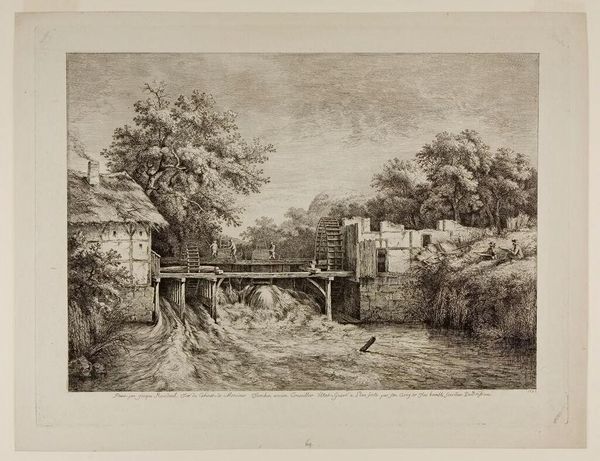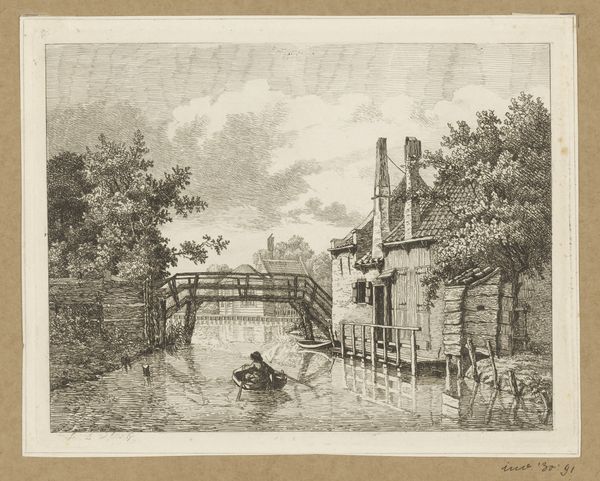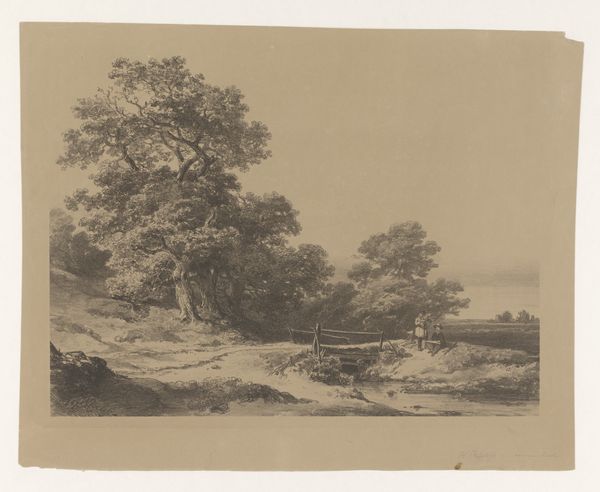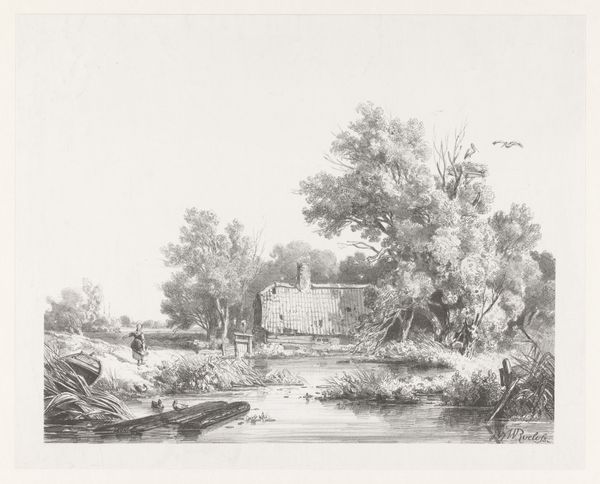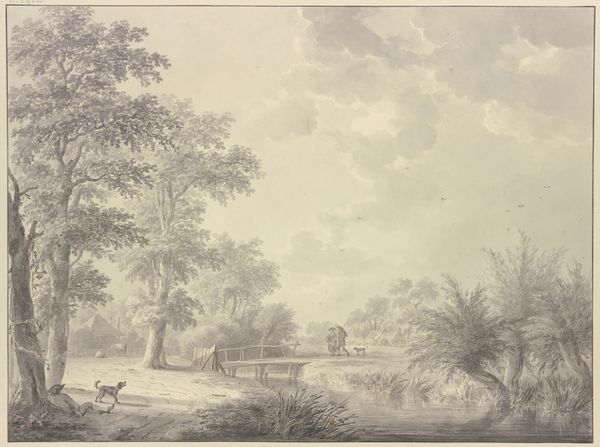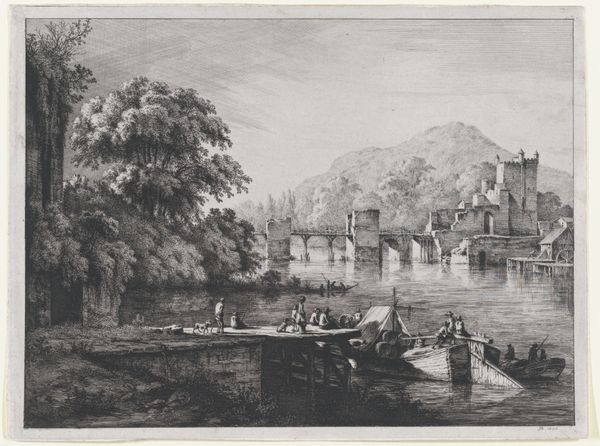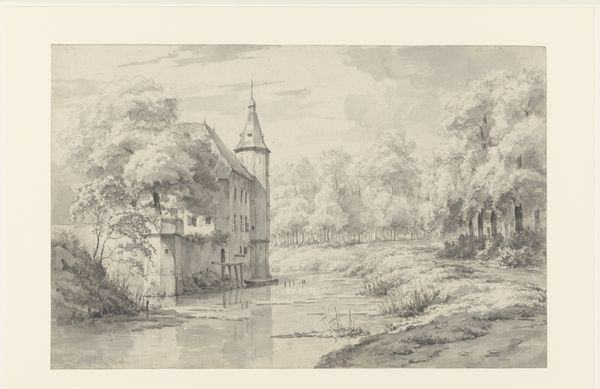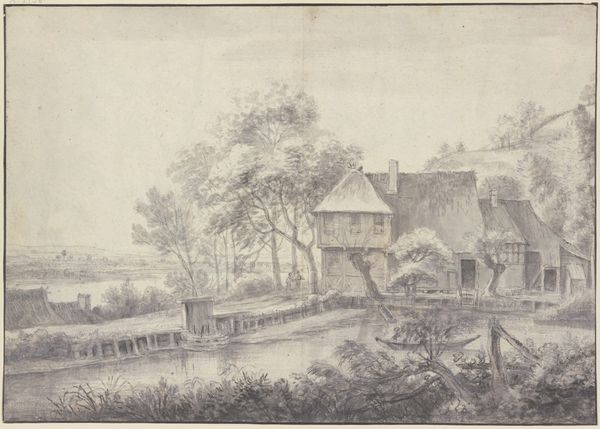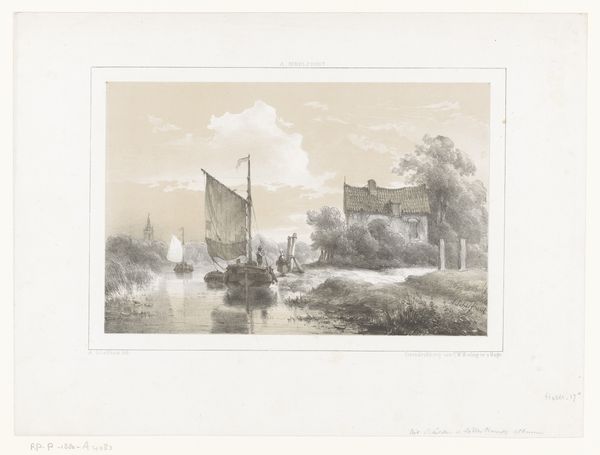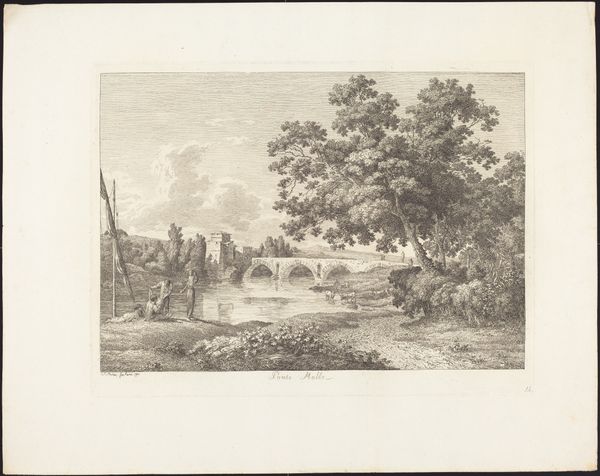
The Watermill, after a painting by Ruisdaël 1782
0:00
0:00
print, etching
#
neoclassicism
# print
#
etching
#
landscape
Dimensions: Sheet: 14 5/8 × 19 9/16 in. (37.1 × 49.7 cm) Plate: 14 3/16 × 19 in. (36 × 48.2 cm)
Copyright: Public Domain
Jean-Jacques de Boissieu made this print, The Watermill, after a painting by Ruisdaël. It was made using the technique of etching, a printmaking process that uses acid to cut into a metal plate, which is then inked and printed onto paper. The intricate detail, especially in the depiction of light and shadow, shows the handwork involved in the etching process. The original painting may have aestheticized a rural scene, but the print makes that scene reproducible for a wider audience. Prints like this depended on an emerging market, a demand for images among a growing middle class. The skilled labor of the printmaker, painstakingly rendering every detail, becomes part of a system of production and distribution. It's a reminder that even seemingly pastoral scenes are connected to broader economic shifts. By considering the materials, making, and social context of this print, we gain a richer understanding of its place in art history, and the shifting boundaries between fine art and craft.
Comments
No comments
Be the first to comment and join the conversation on the ultimate creative platform.
